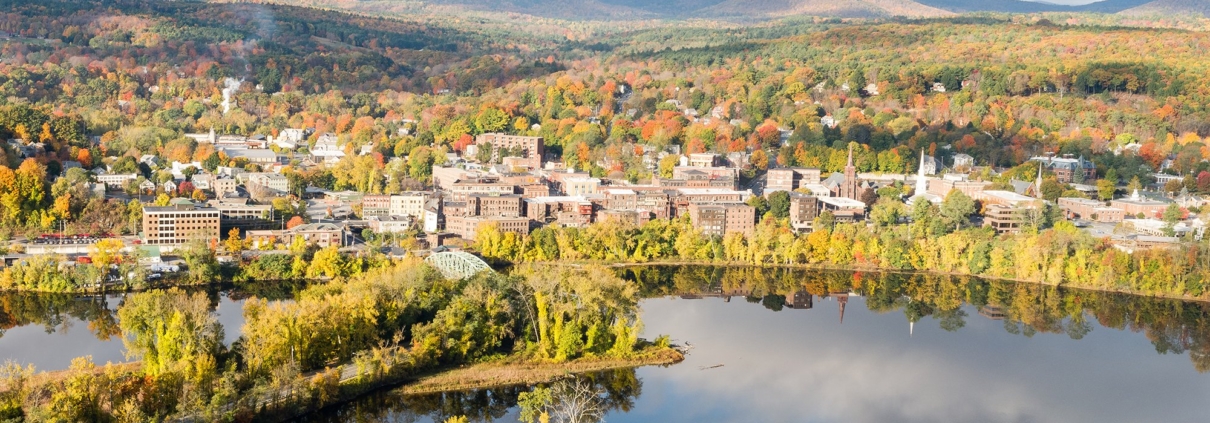This year’s Strongest Town: Brattleboro, VT
Original article written and published by Strong Towns.
With a population hovering around 12,000, Brattleboro, Vermont, is defined in large part by three things: its traditional downtown (complete with multi-story brick buildings facing away from the Connecticut River), a smattering of suburbs branching out from that core, and rural vistas interspersed with natural areas west of Interstate 91, which runs through the town. In many ways, Brattleboro is the archetypal North American town. So, what does this town do differently compared to others like it?
Don’t Wait for a Crisis To Make Change
A conversation with the town’s staff revealed that one of Brattleboro’s strengths is its openness to change. When the town—and the entire state of Vermont—opened itself up to an assessment by the Congress for New Urbanism (CNU) through The Project for Code Reform, Brattleboro was forced to confront the barriers in its land-use regulations.
In a place where the population has stabilized around 12,000 for nearly five decades and major influxes are neither predicted nor anticipated, Brattleboro could’ve easily delayed zoning reform. The town didn’t find itself in the same crisis as cities in Idaho, Montana, and Utah, where populations surged during the pandemic.
“But we don’t have to wait until we’re in crisis mode to make good decisions,” Steve Hayes, the town’s planning technician, remarked. “The momentary and minor uptick in population we did experience exposed how fragile our housing situation could be.”
Brattleboro’s champions aren’t only preparing for a problem that doesn’t yet exist. Hayes shared that despite the static population, household sizes have been steadily decreasing with fewer options available for changing lifestyles, appetites, and budgets.
With that in mind, the town updated its zoning code and according to Planning Director Sue Fillion, lifting restrictions is already producing more housing options. “For example, a four-unit home can now legally accommodate a fifth room, which would’ve been illegal prior to these changes,” she explained.
Find Common Ground and Then Build on It
Demographically, Brattleboro is largely split between rural and urban land use. It’s not uncommon to assume that the interests of people who choose to live, work, and play in an urban area would necessarily diverge from those who opt for a more rural lifestyle. Hayes, however, has observed that these two camps share a lot more in common than might be expected.
“Firstly, you have to meet people where they’re at,” he recommended when communicating to people across divides. “Secondly, densifying and building up our existing urban areas means we’re saving space that would otherwise threaten the preservation of our natural and rural expanses. That resonates with our more rural population.”
For Hayes, the non-partisan approach has likewise been key. “These are ideas that anyone can come to, regardless of their political affiliation,” he pointed out. “There’s no one-size-fits-all approach, but the values and heart at the core of Strong Towns principles are simply good ideas for a small town.”
Listen, Learn, and Take the Next Smallest Step
The Brattleboro team confessed that they’re lucky when it comes to championing Strong Towns ideas: resistance is rare and skepticism is navigable. In fact, they often anticipate more pushback and controversy than they end up receiving, which is a testament both to an open-minded population and to how the town communicates with its residents.
“People need to feel heard,” Sarah Lang, a Planning Commission member, explained. ”Other communities should consider how they’re tuning into the needs of their residents and explore ways of listening that don’t hinge on action or ultimatums. People need to feel like they’re a part of something.”
She largely attributes the town’s legislative successes—such as eliminating regulations that restricted diverse housing options—to the trust built through listening. Credibility, however, is fortified through the town’s willingness to act.
“The Planning Commission isn’t afraid of trying new things and placing small bets,” Fillion said. Whether it’s attempts to slow traffic or change town code, Brattleboro’s incremental approach is eager to demonstrate the merits of the changes it’s championing. “Look, we made a small change and the sky didn’t fall!” Fillion jokes.
While Brattleboro’s candidacy in this year’s Strongest Town Contest was noteworthy from the start, the town didn’t win because of its idiosyncrasies. Many of its struggles (and, conversely, successes) are mirrored elsewhere across North America. What distinguished Brattleboro, however, was its understanding of what building a Strong Town looks like today, tomorrow, and even 20 years from now.
Luckily, those of us living outside of Southeastern Vermont can begin laying that same groundwork where we live and maybe even compete in next year’s Strongest Town Contest.
Congratulations once again, Brattleboro!


